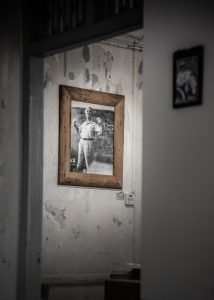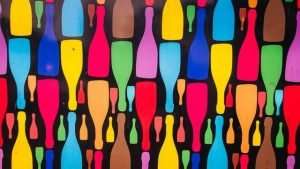“Popular African American Artists” is the blog of artist and historian, Cindy Taylor. It features her articles on the historical artists who influenced the black art movement. You will also find an art gallery full of high resolution images of paintings, sculptures and photographs by black artists from America.
Titles include “African American Sculptor Martin Puryear”, “African American Artist Jacob Lawrence: Biography”, “African American Artist Dr. Charles White”, “African American Artist William Edmondson: A Retrospective” and many more.”
African American artwork is as diverse as the African American people. The art movement was originated in the early 20th century so as to accommodate the growth and diversity of the African American culture.
The artwork has been and still is one of the best representations of the history and culture of African Americans. The African American art movement is a part of a larger art movement that aims at promoting the black culture, especially in a time when racism was on the rise. The artists used various techniques including drawing, painting, photo and graphics to communicate their message.
Towards the end of the 1960’s, many black artists began to move from expressing their ethnic backgrounds to depicting political issues such as civil rights, racism and other social issues affecting their communities. Many artists used different media to express their beliefs on political and racial issues.
The following are some popular African American artists:
Jacob Lawrence is famous for his series paintings that portray life in Harlem during World War II. He did a lot of paintings based on historical events that helped shape not only America but also other countries around the world. Jacob Lawrence aimed at giving his community a positive image by portraying them as hardworking citizens with equal opportunities irrespective of their ethnicity or gender.
Franz Jackson is another great artist who campaigned against racism
African American artists have made a significant contribution to the art world. They have created works of art that address historical and contemporary issues in their community. This is the purpose of this blog, to provide a resource for African American artists, patrons and admirers of African American art.
The term African American art refers to a variety of forms, from visual art to music, dance and theatre. The genre has had a number of different periods, each with its own characteristics and cultural significance.
The earliest known African American artists were slaves who created art for their personal pleasure and rituals in the 18th century, although no works by these artists are known to remain today.
In the 19th century, African American art was generally either European in influence or designed for the tourist trade. The most famous African American painter of this time was Henry Ossawa Tanner (1859-1937), who produced religious paintings for wealthy patrons on the east coast of America.
After the Second World War, artists such as Jacob Lawrence (1917-2001) and Elizabeth Catlett (1915- ) began to take a more modern approach to their work. In the 1950s and 60s, artists such as Romare Bearden (1922-1988), John Biggers (1921-2007), Norman Lewis (1917-1995) and Betye Saar (1930-) became increasingly active, painting works inspired by urban life and people’s experiences of racism. Their work helped fuel the Black Arts Movement of the 1960s and 70s, which sought
African American art is the visual arts created by African Americans and African Diasporic people. These include African Americans who have lived in the United States for generations and those who immigrated from Africa, the Caribbean and Europe.
Trapman, David (2009). The Encyclopedia of American Folk Art. ABC-CLIO. p. 514.
Though it is often assumed that African American artists lack a tradition of visual art, they have produced many works since the late 18th century when they were first allowed to use unrefined materials to make art and crafts. In some cases, African American artists have innovated forms or techniques that have been adopted by artists of other cultures, especially in black popular culture.
African American art includes both fine art and folk art. It has also been influenced by European, African and Native American cultures as well as Islamic culture. Forms include painting, sculpture, quilts, beadwork, prints, posters and more recently jewelry design, ceramic arts, video/film making and photography. Today these works are collected by institutions such as the Smithsonian Museum of African Art in Washington D.C., the National Museum of African Art in Harlem New York City, The Studio Museum in Harlem New York City and the Museum of Contemporary Art in Los
African American art started in the early 20th century during a time when African American artists were not given any type of recognition. These artists had to develop their own styles and work to make themselves known. African American art came into its own in the 1930s when it was used as a form of protest against discrimination.
Toward the end of that decade, African American artists were recognized by white critics and collectors, and they began to get more recognition. In the 1940s, African American artists were still working in a variety of art forms but by the 1950s most of them had adopted abstraction which was popular at that time. After about 1960, the Civil Rights movement changed African American art because many black artists began creating more works that focused on social issues.
By the 1970s, many African Americans were creating works that dealt with history and their heritage such as slave ships and slavery. Black artists became more concerned with social inequality through their work and also incorporated political messages into their pieces as well.*
The first artists to express the blacks’ plight and their dreams in art were the slaves. The only media available to them was that which could be smuggled in or stolen from their owners: charcoal, crayon and paper.
The slave artists depicted life on the plantations as it really was; showing scenes of violence and torture, but also expressing their love for one another and dreaming about freedom.
To make drawings like these was a courageous act in itself. But to catch their true meaning we must remember that the slaves had no previous tradition of artistic expression and no models to follow; they had only their own skills with which to express themselves.
Toward the end of slavery, the paintings became more sophisticated. Artists used more daring themes and images (like lynching), but they also created more hopeful works that expressed their love of family and friends and their faith in God, which helped them endure life’s hardships.
About 100 years later, African American artists began exploring social themes through art in a different way: by questioning stereotypes rather than attacking racial prejudice directly. This movement included many forms of art including literature, poetry, music, dance and theater. The purpose was to redefine black identity using the black experience as a source of strength rather than sadness or bitterness.


